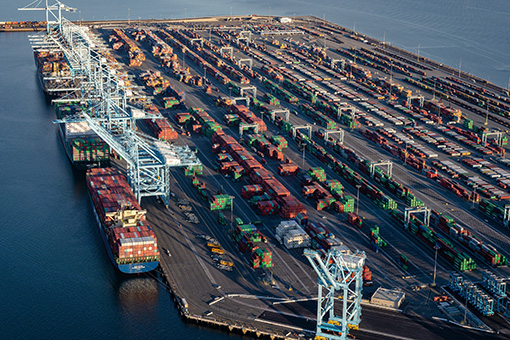 North America’s busiest ports continue to battle bottlenecks, causing shipping delays and global supply chain disruptions, according to a pair of recent reports.
North America’s busiest ports continue to battle bottlenecks, causing shipping delays and global supply chain disruptions, according to a pair of recent reports.
According to Bloomberg News, the U.S. ports in Los Angeles and Long Beach, Calif., handle more than 40% of the nation’s containerized trade with Asia but continue to struggle with the influx of industrial goods alongside a glut of commercial back-to-school and holiday goods that coincide with the easing of lockdowns in China. This, alongside the soon-to-be expiring contracts for thousands of dockworkers, have exacerbated the backup.
In Alberta, Canada, Concrete Alberta reported this week that there is a cement shortfall throughout the province. The group cited inflation, supply chain and an ongoing pandemic as three of the major factors.
“This is not an issue that is targeted to one specific area of the country or one specific industry. The issues being experienced are across borders and industries. I think one of the bigger pieces is that this is a complex issue,” Concrete Alberta Executive Director Dan Hanson told the Journal of Commerce. “There are so many variables, so many moving pieces. It’s really difficult to pinpoint one or two areas and say, ‘Well, if we adjust this or fix this then problems will go away and issues will be resolved.’ It’s not that simple of a conversation.
“Demand for construction materials remains high … across Canada, as well as south of the border, and you accompany that demand with global supply chain issues, equipment and labor shortages, and that’s a significant recipe for issues within industry.”
The Port of Los Angeles reports that more than 28,000 rail containers have been taking up space on its docks, with two-thirds awaiting at least nine days before movement. With more than 115,000 rail workers from 30 railroads able to go on strike as early as July 18, relief may not come soon.
More than half of the truck gates at Port of Los Angeles also go unused because of lack of staffing. Combine that with less than 0.3% of space available at southern California warehouses, and there is nowhere for those containers to go.
“We can’t build these facilities fast enough,” Port of Los Angeles Executive Director Gene Seroka said last month, adding that 2 billion square feet of warehousing already exists in the counties of Riverside, San Bernadino and Los Angeles.
Leave a Reply